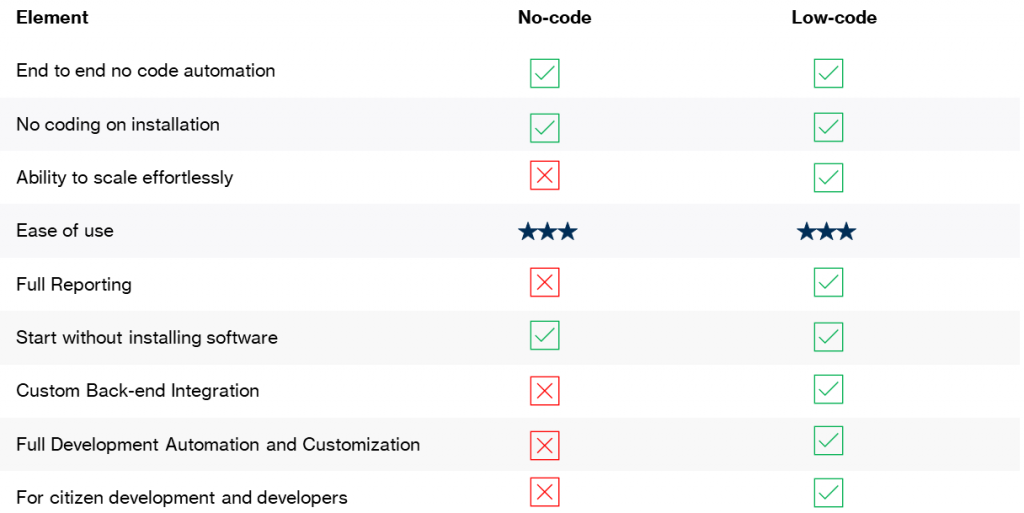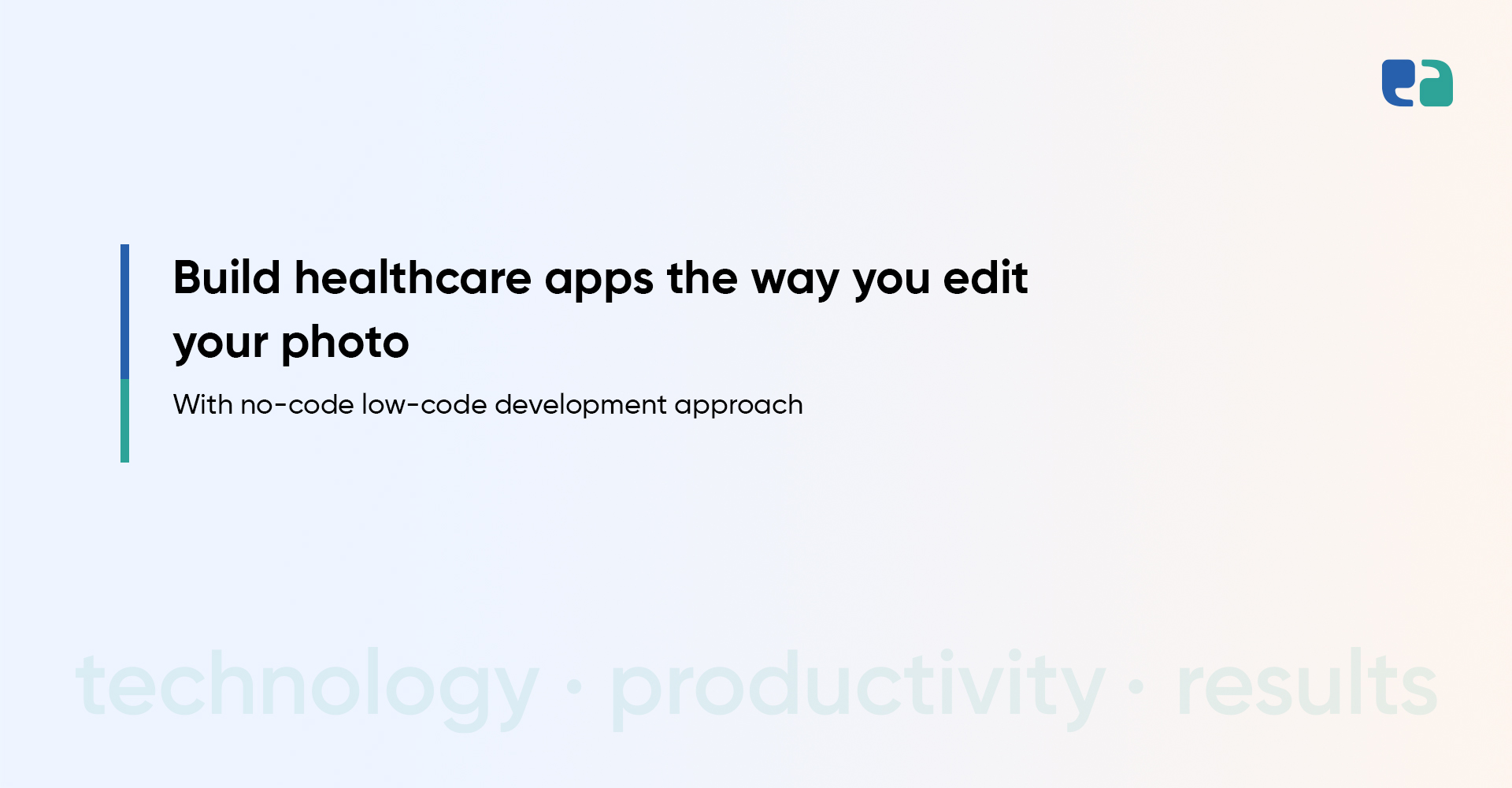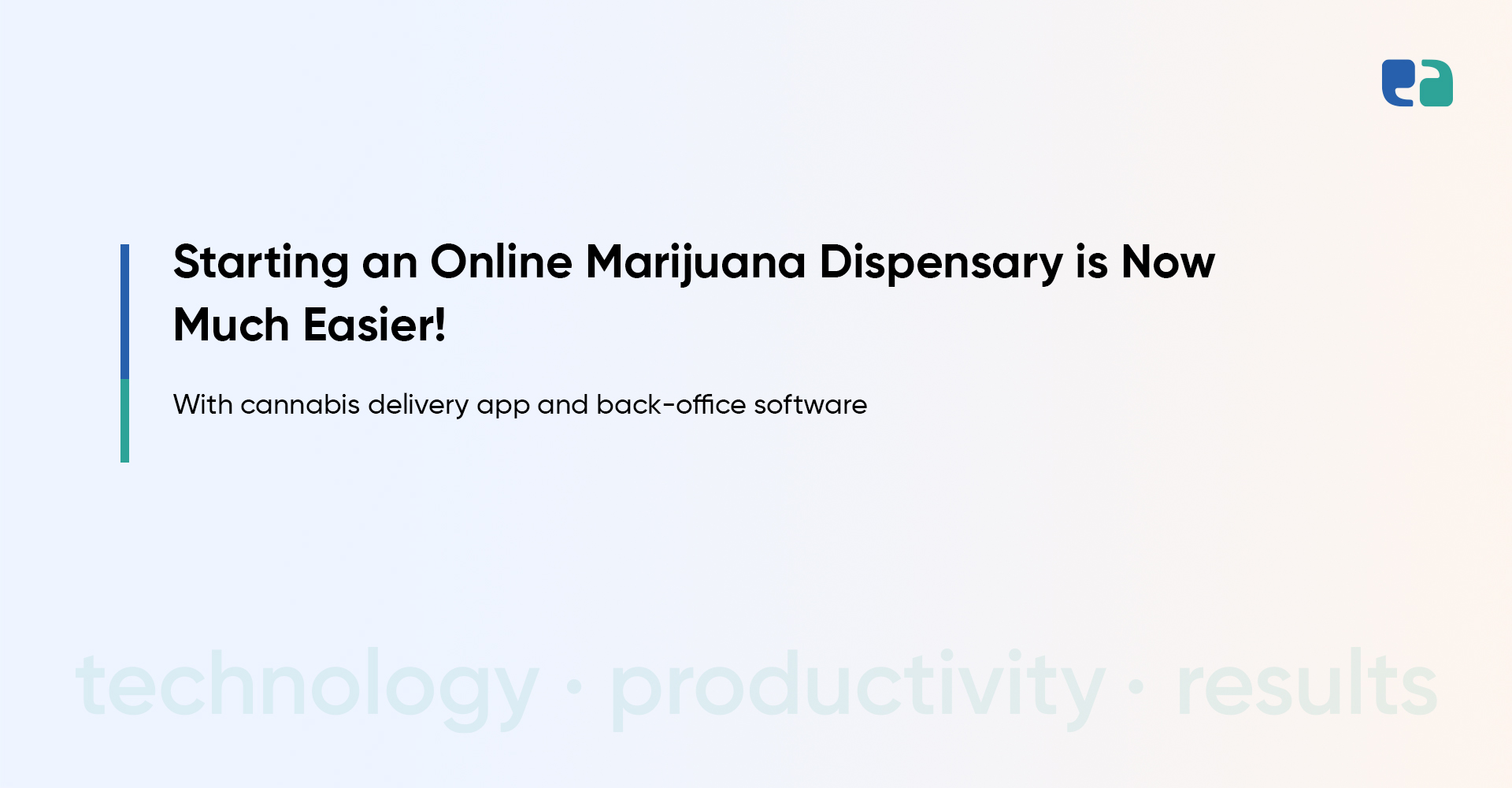Everyone should care about it.
But if you are a healthcare professional, healthcare entrepreneur, or in any way dealing with the healthcare industry, you must care about it.
Because it has the potential to empower you with a healthcare mobile solution you have been delaying due to high cost, tech complexities, and maintenance costs.
Building healthcare app solutions with low-code/no-code platforms is a kid’s play – if you have basic knowledge of workflows, APIs, UI/UX, and other common integrations.
But most importantly, it costs very little compared to custom app development, and the time-to-market also gets reduced by at least 50%.
First of all, both are different things.
However, they fall under the same category of the visual and codeless development approach.
The conventional app development practice has a major limitation.
To achieve any functionality in the app, developers need to write the code for it.
Due to this, developers end up writing several thousand lines of code for a basic healthcare app.
The situation gets worse when developers are working on advanced healthcare apps.
As an upshot, it costs really big to build healthcare app solutions.
Many times, it costs so big that the majority of healthcare startups and healthcare professionals skip the idea of investing in healthcare app solutions.
So, to eliminate such a limitation and help developers achieve app functionality without writing any code or writing only a few lines of code, the concept of low-code and no-code development has emerged.
In detail, when a developer is following the low-code no-code development approach, he can build a healthcare mobile app by drag and drop option and writing zero or fewer lines of code, utilizing any low-code no-code platform.
To develop a no-code and low-code healthcare app, you must require a low-code platform for building a low-code app and a no-code platform for building a no-code app.
However, there are some advanced platforms available that allow you to build both low-code and no-code apps from the same platform.
These platforms are nothing but the tech infrastructure in the form of a web app where you create your app project, drag and drop app elements, convert app design into code, create workflows, manage CRUD API calls, integrate 3rd party APIs, write some custom code if needed and download the complete source code of the mobile app.
Here, it is worth mentioning that you still require some basic knowledge of programming language, API, and CRUD operations to build low-code no-code healthcare apps.
Well, as the name suggests, a no-code platform facilitates you to build a healthcare app without writing a single line of code.
Because of its nature of complete codeless app development, it is majorly used to build basic healthcare apps.
Whereas, a low-code platform is an ideal choice for building a modern and advanced-level healthcare app as it enables developers to write custom code as well.
In other words, working with a low-code platform requires technical skills as it is more focused on developers and making their development tasks easier.
The following is a detailed comparison of no-code and low-code development.

The IT industry has been investing millions of dollars in building low-code no-code development platforms.
The value it delivers and the problems it solves are the major driving forces.
1. It saves project costs by almost 50 to 70%
Custom mobile app development is notorious for its high price.
Since building a custom app involves a lot of effort from developers and their expertise, IT companies are left with no choice but to charge high to compensate for what they are investing in.
But no code low code platforms reduce the efforts of the developers which directly results in fewer development hours and so does project cost saving by 50 to 70%.
2. It reduces time-to-market
In best-case scenarios, it takes developers at least 3 months to build a basic mobile app and 5+ months to build an advanced mobile app.
So, this way, the average time-to-market for an app is at least 100 days.
But with no code low code platforms, developers can build the same level of the app much faster by leveraging the built-in drag & drop functionality and code automation facility.
3. It reduces the code maintenance efforts and cost
Not all developers follow the practice of clean code architecture.
Thus, code maintenance requires more effort and it becomes more expensive.
But when it comes to an app built using any no-code low-code platform, the app works on clean code as all no-code low-code platforms are built to produce clean code or maintenance-free code.
4. It assures maximum stabilized mobile app
Bugs are very common in custom-built mobile apps.
A custom app is more liable to having more severe bugs than an app built with a low-code no-code platform.
Why?
Well, in the custom-built app, developers themselves have to write code for every function.
But in the case of a low-code no-code app, the app code is produced by an algorithm that is already well-tested for generating code free of bugs.
Let’s classify the healthcare apps into type 1 (basic level apps such as doctor appointment booking), type 2 (moderate level apps such as health tracker app), and type 3 (advanced level apps such as telehealth + on-demand medicine delivery app).
With no-code platforms, you can easily build a basic level of healthcare apps such as,
- Appointment booking
- Hospital staff attendance management
- Virtual patient check-in
- Basic symptom checker
- Online patient onboarding app
- Healthcare news app
- Healthcare eCommerce app
- Pill reminder app
But to build type 1 and type 2 healthcare apps, you need to work on a low-code platform as it allows you to add custom code and achieve functionality that a no-code platform lacks natively.
These apps include,
- Healthcare marketplace
- Online pharmacy app
- Telemedicine app
- Mental therapy app
- Meditation app
- Women’s wellness app
- Remote patient monitoring app
Low-code no-code development is still in its early stages.
However, it will soon heat up as organizations and startups prefer low-code no-code apps over custom-built apps due to the value they deliver.
Meaning, you can jump into it by building a healthcare-specific low-code no-code platform.
Why healthcare-specific?
Well, healthcare is a very unique industry.
Healthcare apps have several major differences as compared to apps belonging to other industries.
Thus, to satisfy the specific requirements of healthcare apps, only a healthcare-specific low-code no-code platform will work.
Well, we have been following no-code/low-code since its inception and we must say, it has the potential to change the healthcare industry.
The problem currently exists in the healthcare industry is a lack of enthusiasm when it comes to mobile apps.
The top reasons behind it are – as discussed – high cost, tech complexities, and maintenance efforts.
There are multiple ways to tackle these challenges – such as MVP apps, cross-platform apps, and clean code architecture.
But nothing is capable of solving all 3 challenges in the single-shot – except for low-code/no-code development.
However, here it is worth noting that custom app development is still the king.
For building a purpose-driven healthcare app that is the first of its kind, only custom development can justify the idea of the app.
Where no-code/low-code healthcare development works best is the clone app or the type of app which has introduced to the market years ago.
In essence, no-code/low-code development has very great potential.
But it still cannot be able to replace custom development!
Explore our white-label no-code healthcare solutions in detail:
The following are the different use cases of our no-code healthcare software.
2. No-code healthcare vendor management
3. No-code patient management software



